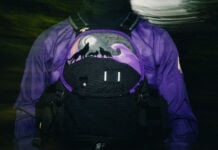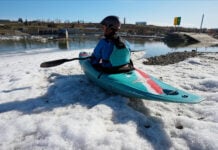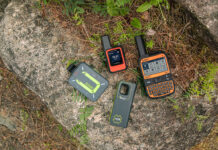Whether you are brand new to whitewater or are a seasoned paddler, it’s important to know what gear to take along to prepare you for any situation. With all your river rescue gear choices, minimize entrapment risk by avoiding anything loose or dangling, keep webbing and strap tails short, always lock exposed carabiners, and never attach a rope to yourself without a quick release.
Carrying these 12 pieces of gear on you ensures you’ll be prepared for anything the river throws at you, even if you get separated from your boat.
River safety & rescue gear essentials
PFD
Choose a PFD that fits without slipping off when pulled from above with your arms raised above your head, balances comfort and mobility with flotation, and has enough pockets to fit the other gear on this list. Rescue PFDs are outfitted with a quick release harness, which can be used to attach a rope to your PFD in a rescue. If you choose a PFD with a quick release harness, get training on how to use it and practice releasing under tension.
Helmet
Your helmet needs to fit well and be designed for use in whitewater. Whitewater helmets never have long solid brims, which could act as scoops in the water leading to neck injuries.
Knife
Carry a sharp knife in a secure sheath on the outside of your PFD where you can access it with both hands. Practice taking the knife out and putting it back in to build muscle memory and get in the habit of inspecting its condition. While many PFDs come with a knife attachment point on the front, this can expose the knife to impact while swimming, possibly breaking the sheath. Using two zip ties to fasten the sheath to the shoulder strap of your PFD ensures it is accessible and out of the way.
Footwear
Appropriate footwear is essential not only for swimming and walking in rapids but for walking the shoreline of the river or an emergency hike out through the woods. Your river shoes need to stay on while swimming, protect the bottoms of your feet with solid, grippy soles, cover your toes, and be easy to swim with. Anything from thrift store runners to top-of-the-line river shoes can work, the latter probably grippier.
Whistle
A whistle is an important signaling device on the river. Use these internationally recognized signals: one short blast for attention, three long blasts for an emergency. Use it sparingly to avoid whistle blasts getting tuned out.
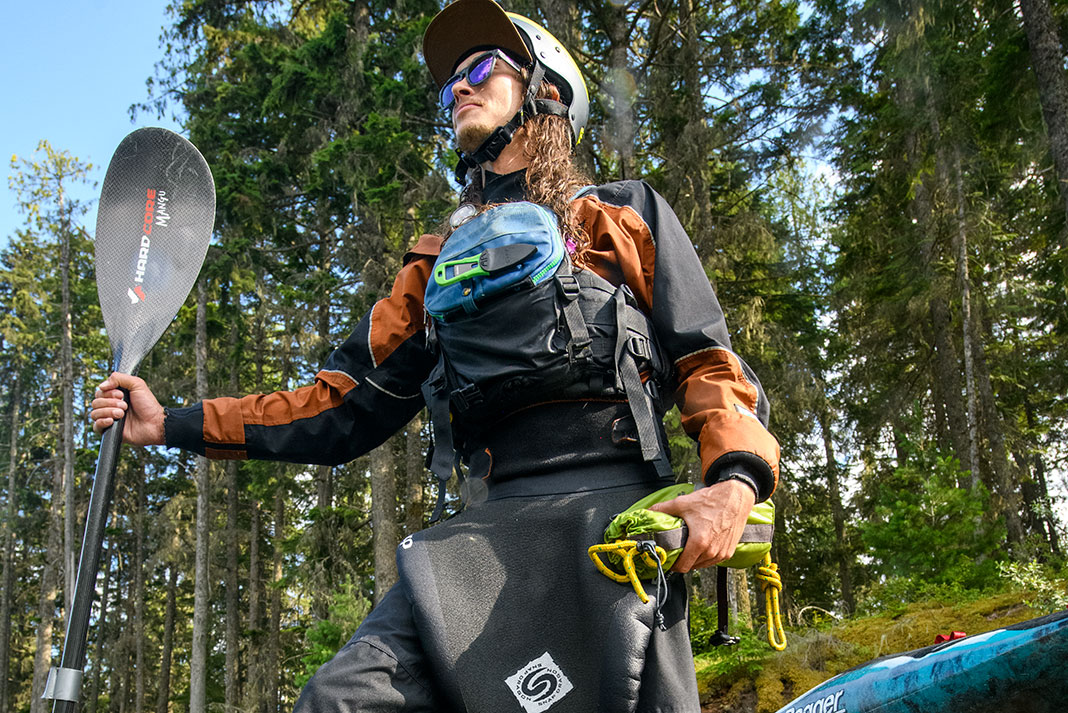
Clothing
Dress for the water temperature, not the weather. No matter how confident of a paddler you are, you may end up taking part in a rescue requiring you to be in the water for an extended period of time. Dress in non-cotton, insulating layers with a windproof shell. In colder water conditions, add a wetsuit or drysuit.
Food
During a rescue there isn’t time to make a Dutch oven lasagna on the side of the river. Carry a snack with simple sugars and fat to make sure you can maintain your energy level and a clear head through a long rescue.
Emergency medical kit
Carry a first aid kit, even on day trips, ideally split between two or more boats. In addition to the usual supplies, carry an emergency kit consisting of gloves, a compact CPR mask, pencil and paper, and a fire starter in a waterproof container in your PFD.
Rigging gear
Rather than having one big bag of rigging gear which may end up in the boat pinned in the middle of the river, spread it out between multiple people, and have each person carry a couple of items in their PFD pockets. A good balance between versatility and weight is four carabiners, three pulleys, two accessory cords, one piece of webbing, and one high-quality throw bag, or 4, 3, 2, 1, 1. This is just enough gear to set up a 3:1 mechanical advantage system.
Carabiners
Only choose locking carabiners to ensure they don’t accidentally clip onto something in the river, causing an entrapment hazard. Carabiners can be carried unlocked in a PFD pocket or locked on the outside of your PFD.
Pulleys
At least one should be prusik minding (bell-shaped). Small (under 1.5-inch wheel size) aluminum pulleys are light, fit nicely into a PFD pocket, and work well for river rescues.
Accessory cord & webbing
Two 1.5-meter strands of six-millimeter accessory cord can be carried in a PFD pocket. A four- to five-meter strand of 25-millimeter tubular webbing (often called a flip line) might also fit in a pocket. It can also be worn wrapped around the waist but cut to size so it has short tails and fits very snugly. Always attach it with a locked carabiner.
Throw bag
Choose a throw bag that floats, drains water, closes tightly and has attachment points other than the rope itself. It should contain 15 to 25 meters of floating rope. To work with the rest of your rigging gear in a mechanical advantage system, choose a high-quality kernmantle rope eight to 9.5 millimeters in diameter. A thick, high-quality rope like this offers a lot of versatility but can be heavy to throw and bulky to carry on your person. A six-millimeter rope is much more compact and easier to throw but cannot be used in a mechanical advantage system. Thinner ropes are also harder to hold and can result in rope burn for the thrower or subject. Choose a smaller bag that fits in a PFD hand-warmer pocket and carry a larger bag attached to a boat.
Boreal River Rescue’s instructor Jamie Orfald-Clarke and director Danny Peled offer certification courses in swiftwater and whitewater rescue, wilderness medicine and first aid.
When it comes to river rescue gear, if you stay ready, you don’t have to get ready. | Feature photo: Daniel Stewart


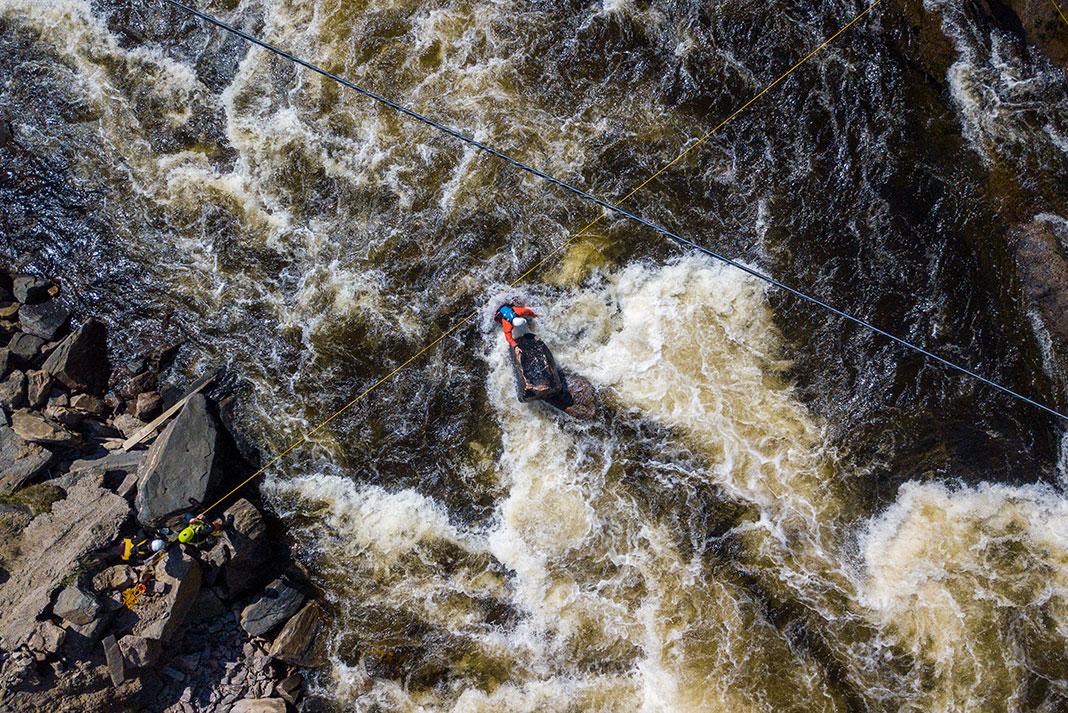
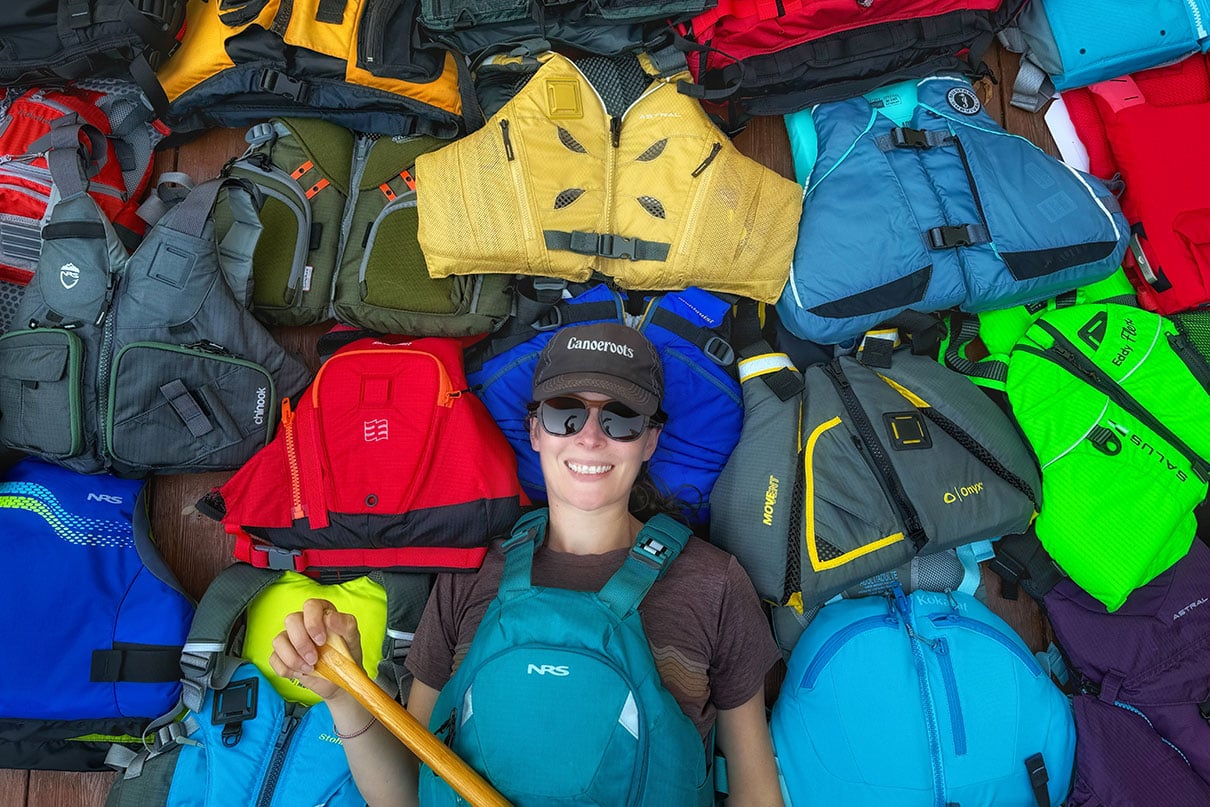
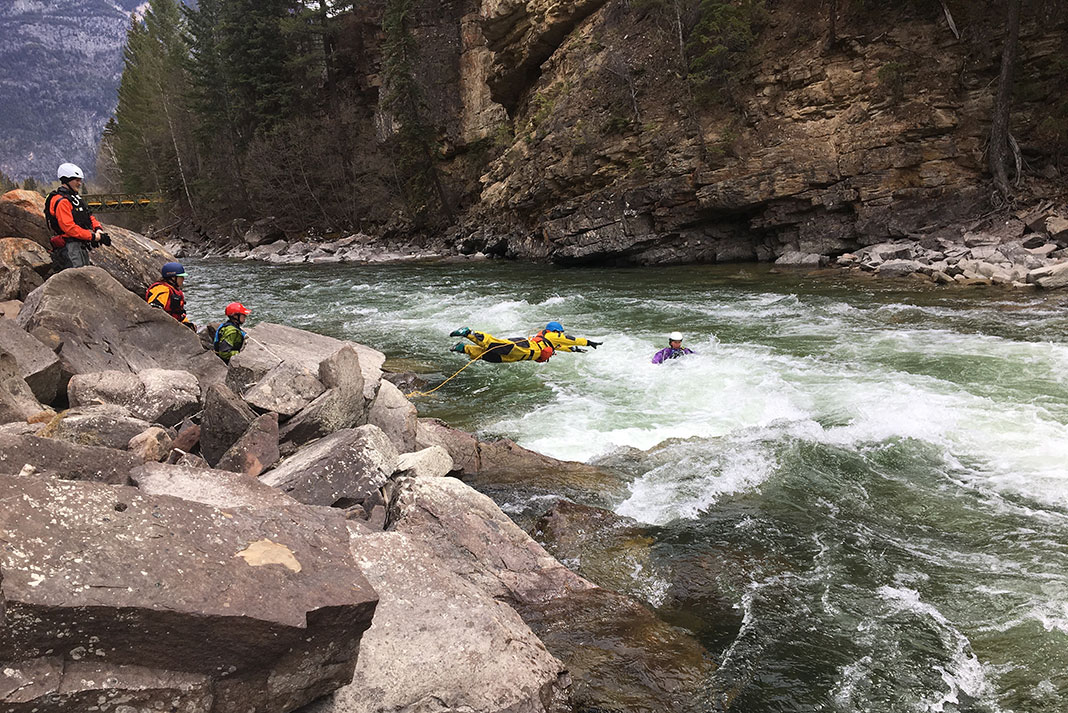
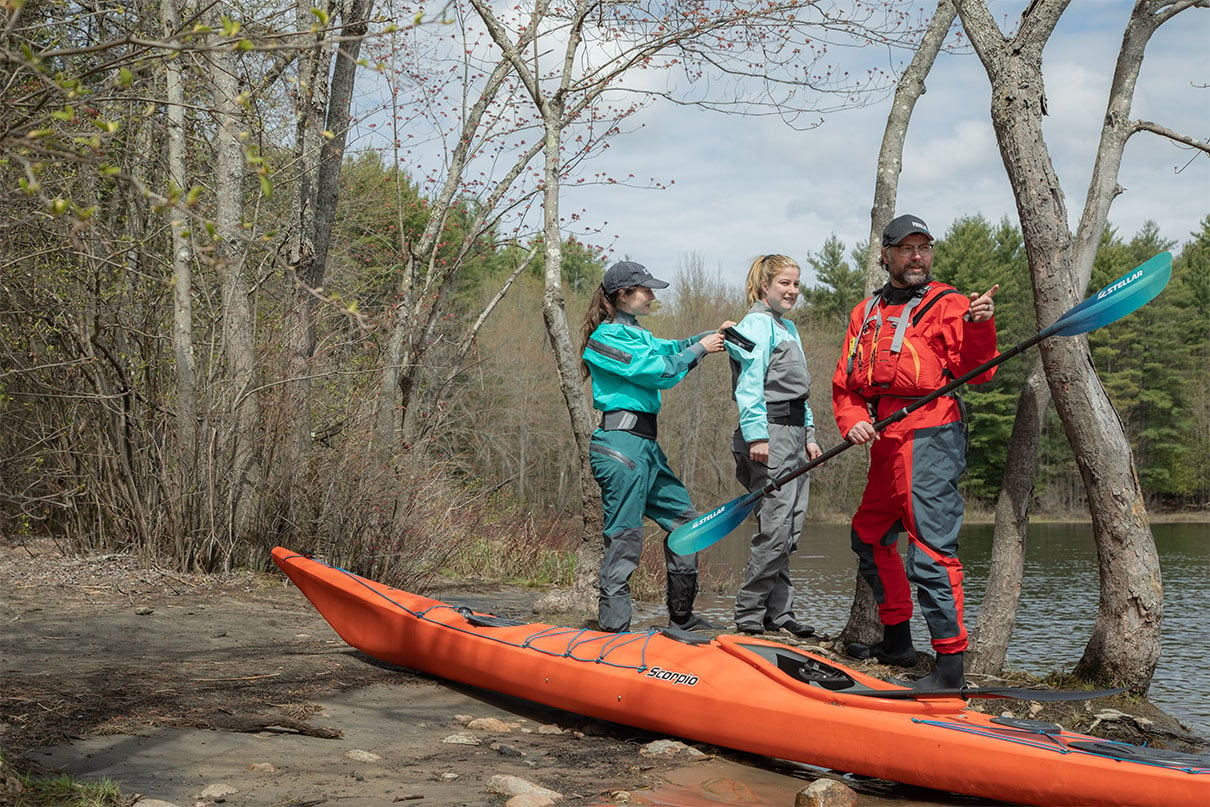
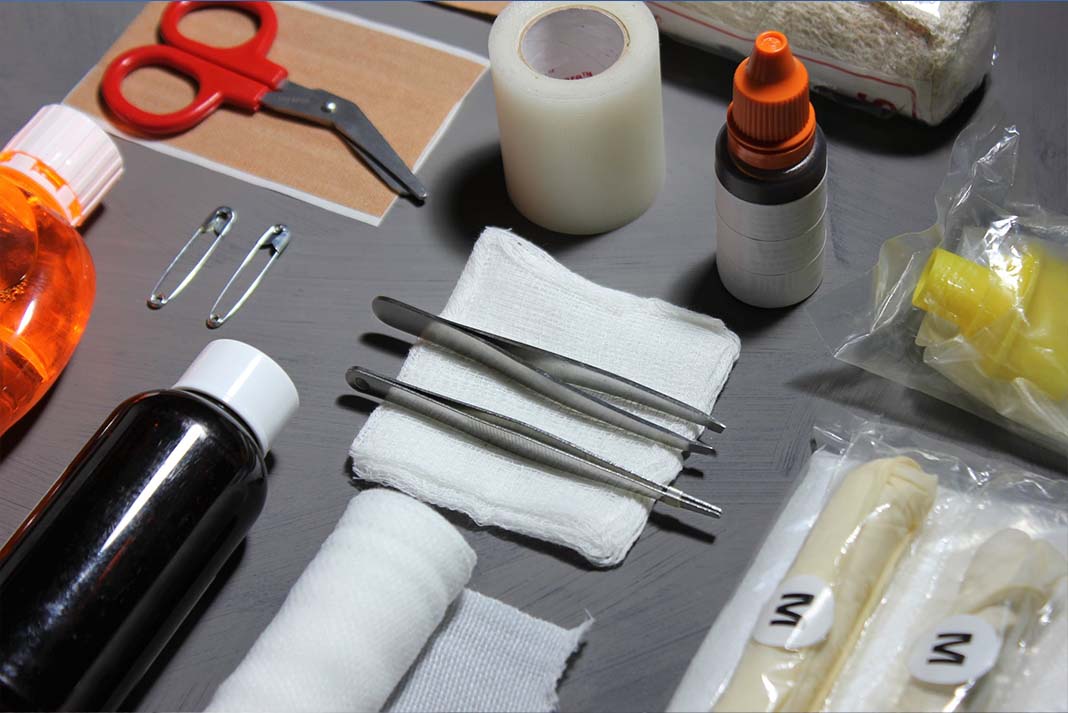
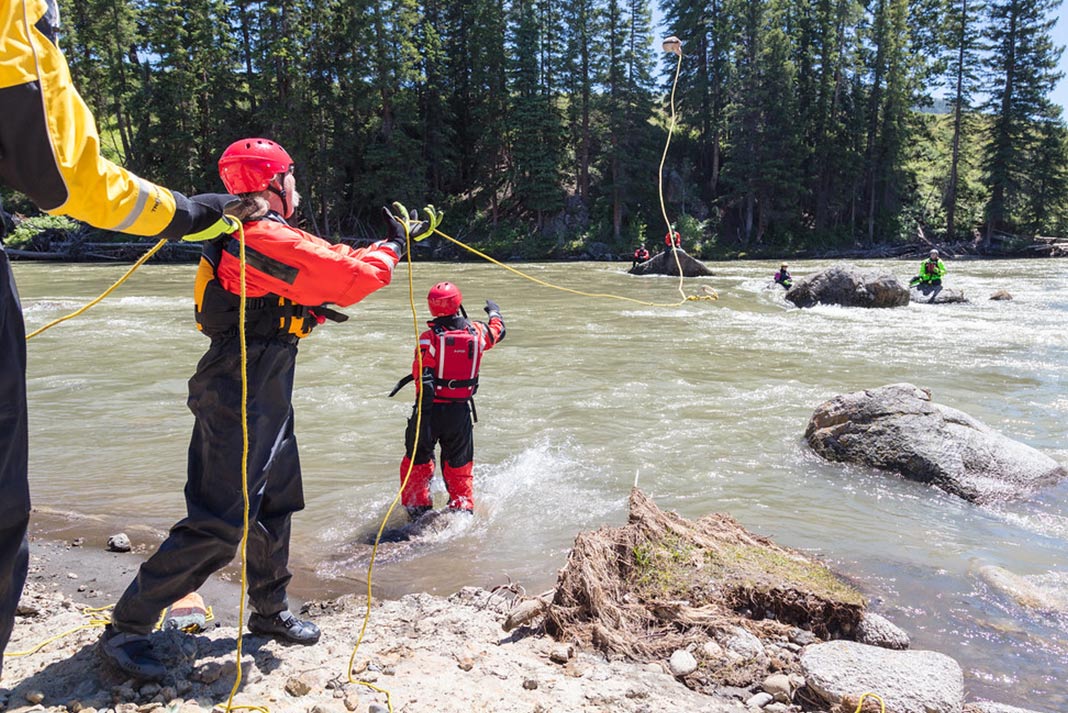
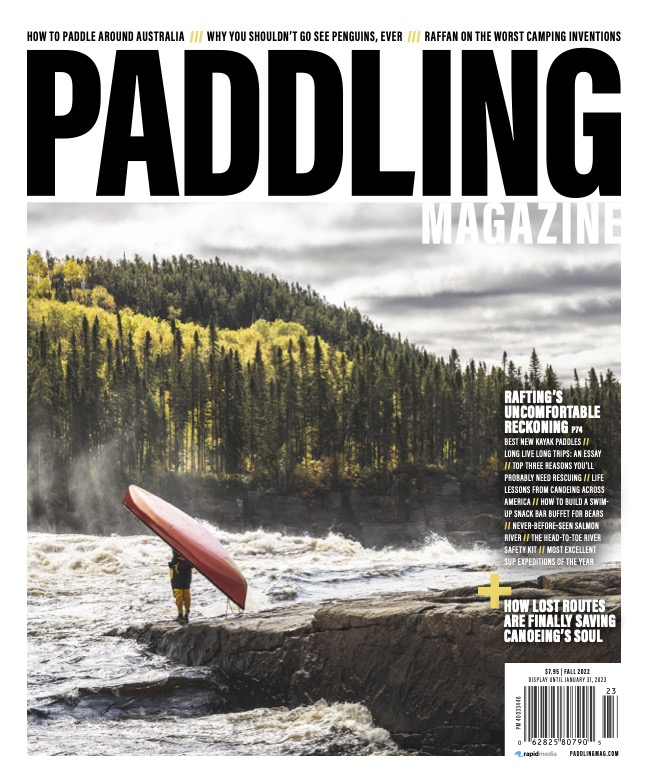 This article was first published in the Fall 2022 issue of Paddling Magazine.
This article was first published in the Fall 2022 issue of Paddling Magazine. 